Table of Contents
Bringing the charm of woodland creatures into your home has never been more delightful than with this adorable squirrel amigurumi pattern. Perfect for nature lovers and crochet enthusiasts alike, this detailed guide will walk you through creating a huggable squirrel friend with a distinctive two-tone body and fluffy tail. Whether you’re an experienced crocheter or relatively new to amigurumi, this pattern provides clear instructions to help you craft a squirrel that’s sure to become a treasured handmade item.
Understanding Amigurumi Squirrel Design
Amigurumi is the Japanese art of crocheting small, stuffed yarn creatures. This squirrel pattern incorporates classic amigurumi techniques with unique design elements that capture the essence of these playful woodland creatures. The pattern creates a squirrel with a rounded body, expressive face, and the signature bushy tail that makes squirrels so recognizable and beloved.
Materials Needed for Your Squirrel Project
Before beginning your squirrel amigurumi adventure, gather these essential supplies:
Yarn Selection
- Main Color (MC): Red Heart Soft worsted weight yarn in Cocoa (approximately 20 yards) – This creates the primary brown color for your squirrel’s head, parts of the body, and arms
- Accent Color 1 (AC1): Red Heart Soft worsted weight yarn in Wheat (less than one ball) – For the squirrel’s belly, feet, and arm details
- Accent Color 2 (AC2): Red Heart Hygge bulky yarn in Latte (one ball) – Creates the perfect fluffy texture for the squirrel’s tail
Tools and Notions
- G-size (4.25 mm) crochet hook
- Two 15 mm brown safety eyes
- Poly-fil fiber filling or similar stuffing material
- Tapestry needle for sewing pieces together
- Straight pins for positioning parts before attachment
- Stitch markers (optional but helpful for tracking rounds)
Essential Crochet Terminology
This pattern uses standard crochet abbreviations:
- ch – chain stitch
- sc – single crochet (the primary stitch used in amigurumi)
- inc – increase (two single crochets in one stitch)
- dec – decrease (single crochet two stitches together)
- sl st – slip stitch
- sc join – special joining technique (with slip knot on hook, insert hook into stitch, yarn over, pull up a loop, yarn over, pull through both loops on hook)
- dc – double crochet
Pattern Notes for Best Results
- Work in continuous rounds unless otherwise specified
- For best results, assemble parts in the order specified in the pattern
- Keep yarn tails intact until final assembly to allow for repositioning if needed
- Note that the chain-3 at the beginning of rounds counts as a double crochet
- Gauge is not critical for amigurumi, but use the same hook throughout to ensure proportional parts
Creating Your Squirrel Body
The body forms the foundation of your squirrel with a distinctive two-tone design:
Round 1: With Main Color (MC/Cocoa), create a chain of 2, then work 6 single crochets in the second chain from hook (6 stitches) Round 2: Increase in each stitch around (12 stitches) Round 3: Work a pattern of [single crochet, increase] repeated 6 times (18 stitches) Round 4: Continue expanding with [2 single crochets, increase] repeated 6 times (24 stitches) Round 5: Work 12 single crochets, then change to Accent Color 1 (AC1/Wheat) and work 12 single crochets (24 stitches total)
The pattern continues with alternating color sections:
Round 6: Change to MC, work [3 single crochets, increase] 3 times, change to AC1, work [3 single crochets, increase] 3 times (30 stitches) Round 7: Change to MC, work 15 single crochets, change to AC1, work 15 single crochets (30 stitches) Round 8: Change to MC, work [4 single crochets, increase] 3 times, change to AC1, work [4 single crochets, increase] 3 times (36 stitches)
Continue this pattern of alternating colors while increasing:
Round 9: Change to MC, work 18 single crochets, change to AC1, work 18 single crochets (36 stitches) Round 10: Change to MC, work [5 single crochets, increase] 3 times, change to AC1, work [5 single crochets, increase] 3 times (42 stitches) Round 11: Change to MC, work 21 single crochets, change to AC1, work 21 single crochets (42 stitches) Round 12: Change to MC, work [6 single crochets, increase] 3 times, change to AC1, work [6 single crochets, increase] 3 times (48 stitches) Rounds 13-20: Change to MC, work 24 single crochets, change to AC1, work 24 single crochets (48 stitches)
Now begin decreasing to shape the lower body:
Round 21: Change to MC, work [6 single crochets, decrease] 3 times, change to AC1, work [6 single crochets, decrease] 3 times (42 stitches) Round 22: Change to MC, work [5 single crochets, decrease] 3 times, change to AC1, work [5 single crochets, decrease] 3 times (36 stitches) Round 23: Change to MC, work [4 single crochets, decrease] 3 times, change to AC1, work [4 single crochets, decrease] 3 times (30 stitches) Round 24: Change to MC, work [3 single crochets, decrease] 6 times (24 stitches) Round 25: Work [2 single crochets, decrease] 6 times (18 stitches)
Add stuffing firmly at this point.
Round 26: Work [single crochet, decrease] 6 times (12 stitches) Round 27: Decrease 6 times (6 stitches)
Fasten off, leaving a long tail for sewing. Thread this tail through the remaining 6 stitches and pull tight to close. Weave in the end securely.
Crafting the Squirrel’s Head
The head gives your squirrel its character and expression:
Round 1: With MC, chain 2, then work 6 single crochets in the second chain from hook (6 stitches) Round 2: Increase in each stitch around (12 stitches) Round 3: Work [2 single crochets, increase] 4 times (16 stitches) Round 4: Continue with [3 single crochets, increase] 4 times (20 stitches) Rounds 5-6: Work single crochet evenly around (20 stitches) Round 7: Expand with [4 single crochets, increase] 4 times (24 stitches) Round 8: Work [5 single crochets, increase] 4 times (28 stitches) Round 9: Continue increasing with [6 single crochets, increase] 4 times (32 stitches) Round 10: Work [7 single crochets, increase] 4 times (36 stitches) Rounds 11-16: Maintain 36 stitches by working single crochet evenly around
Now insert the safety eyes between Rounds 9 and 10, spacing them approximately 7 stitches apart. Position the eyes so the space between them falls on a flat side of the head, creating a flat forehead and face area.
Begin decreasing to shape the head:
Round 17: Work [4 single crochets, decrease] 6 times (30 stitches) Round 18: Continue with [3 single crochets, decrease] 6 times (24 stitches) Round 19: Work [2 single crochets, decrease] 6 times (18 stitches)
Add stuffing firmly.
Round 20: Work [single crochet, decrease] 6 times (12 stitches) Round 21: Decrease 6 times (6 stitches)
Fasten off, leaving a long tail for attachment. Thread yarn through the remaining 6 stitches and pull tight to close the opening.
Attach the head to the narrow end of the body around Round 4, positioned between Rounds 9 and 16 of the head. Center the narrow end of the head over the AC1 (belly) side of the body.
Creating Expressive Ears
Make two identical ears to give your squirrel its alert appearance:
Row 1: With MC, chain 4, then work 8 double crochets in the fourth chain from hook (remember that the initial ch-3 counts as a double crochet, giving you 9 stitches total) Row 2: Slip stitch into the top of the beginning chain-3 to join and form a circle
Fasten off, leaving a long tail for sewing.
Attach the ears to the head along Round 16, spacing them approximately 8 stitches apart and aligning them with the eyes.
Forming the Hind Legs
Make two identical hind legs that will support your squirrel in a sitting position:
Round 1: With MC, chain 2, then work 6 single crochets in the second chain from hook (6 stitches) Round 2: Increase in each stitch around (12 stitches) Round 3: Work [single crochet, increase] 6 times (18 stitches) Round 4: Continue with [2 single crochets, increase] 6 times (24 stitches) Round 5: Work [3 single crochets, increase] 6 times (30 stitches) Round 6: Expand further with [4 single crochets, increase] 6 times (36 stitches) Round 7: Work [5 single crochets, increase] 6 times (42 stitches) Rounds 8-11: Maintain 42 stitches by working single crochet evenly around
Fasten off, leaving a long tail for attachment.
Attach the hind legs to the body between Rounds 9 and 25, positioning them to equally cover both the MC and AC1 sections. When you’ve sewn each leg about three-quarters of the way around, add stuffing, then complete the attachment.
Adding the Hind Feet
Create two identical hind feet that will help your squirrel stand:
Round 1: With AC1, chain 2, then work 5 single crochets in the second chain from hook (5 stitches) Round 2: Increase in each stitch around (10 stitches) Rounds 3-8: Work single crochet evenly around for six rounds (10 stitches)
Fasten off, leaving a long tail for attachment. Add light stuffing to each foot. Press the last round flat, then sew through both layers to attach the feet across the last 4 rounds of the hind legs and one round of the body. Position the feet so that the first 6 rounds extend in front of the body, acting as stabilizers when the squirrel is upright.
Creating the Arms
Make two arms that will give your squirrel added character:
Round 1: With AC1, chain 2, then work 6 single crochets in the second chain from hook (6 stitches) Round 2: Increase in each stitch around (12 stitches) Rounds 3-4: Work single crochet evenly around for two rounds (12 stitches) Round 5: Work [4 single crochets, decrease] twice (10 stitches) Round 6: Change to MC, then work single crochet evenly around (10 stitches) Rounds 7-20: Continue with single crochet evenly around for fourteen more rounds (10 stitches)
Fasten off, leaving a long tail for attachment. Press the paw area flat with a slight curve. Holding the paw flat, stuff the arm but leave the paw unstuffed. Press the last round flat. Sew the arm to the body vertically between Rounds 5 and 10, positioning it 4 stitches behind the color change line. Sew along the top and bottom of the arm for 4 stitches to secure it pointing forward.
Crafting the Distinctive Fluffy Tail
The tail is perhaps the most recognizable feature of your squirrel:
Round 1: With AC2 (fluffy Latte yarn), chain 2, then work 6 single crochets in the second chain from hook (6 stitches) Round 2: Increase in each stitch around (12 stitches) Round 3: Work [single crochet, increase] 6 times (18 stitches) Round 4: Continue with [2 single crochets, increase] 6 times (24 stitches) Round 5: Work [3 single crochets, increase] 6 times (30 stitches) Round 6: Expand with [4 single crochets, increase] 6 times (36 stitches) Round 7: Continue increasing with [5 single crochets, increase] 6 times (42 stitches) Round 8: Work [6 single crochets, increase] 6 times (48 stitches) Round 9: Skip 24 stitches, then work 24 single crochets in the remaining stitches (24 stitches worked, 24 stitches left unworked) Round 10: Work single crochet evenly around (24 stitches) Round 11: Begin decreasing with [2 single crochets, decrease] 6 times (18 stitches) Round 12: Work single crochet evenly around (18 stitches) Round 13: Continue decreasing with [single crochet, decrease] 6 times (12 stitches) Round 14: Decrease 6 times (6 stitches)
Fasten off and weave in the end. Now continue the tail by working on the 24 unworked stitches from Round 9:
Round 1: Join with a single crochet join, then work 23 more single crochets (24 stitches) Rounds 2-16: Work single crochet evenly around for fifteen rounds (24 stitches) Round 17: Begin decreasing with [2 single crochets, decrease] 6 times (18 stitches)
Add stuffing to the tail.
Round 18: Continue decreasing with [single crochet, decrease] 6 times (12 stitches) Round 19: Decrease 6 times (6 stitches)
Fasten off, leaving a long tail for attachment. Thread yarn through the remaining 6 stitches and pull tight to close. Attach the tail to the body with the bottom positioned at Round 22, evenly placed between the hind legs to provide support when the squirrel is upright. Using a scrap piece of yarn, connect the center of Round 1 of the tail to the center of the last round of the head. This creates a natural curve along the body.
Adding Final Facial Details
Creating the Nose
Using a long strand of AC1 (Wheat), sew from the center of the nose area, up 2 rounds, and back through the center of the nose. Continue stitching on either side of the upper stitch to create a triangle shape, always threading back through the center of the nose for definition.
Shaping the Face
For that classic squirrel expression, thread yarn up through the center of the nose and down through a stitch 4 rounds directly below the nose. Then thread the yarn back up through the center of the nose. Pull tightly to create a natural crease in the snout, giving your squirrel character.
Tips for Perfect Amigurumi Squirrels
- Tension Matters: Keep your tension consistent throughout for a professional finish
- Color Changes: Work color changes at the end of the previous stitch for clean transitions
- Stuffing Technique: Stuff firmly but not so tightly that stitches stretch or stuffing shows through
- Safety Eyes: Insert before closing the head for secure placement
- Assembly Order: Follow the suggested assembly sequence for best results
- Positioning: Use pins to test positions before sewing pieces permanently
- Tail Placement: The proper positioning of the tail helps your squirrel balance in a sitting position
Creative Variations for Your Squirrel
Once you’ve mastered the basic pattern, consider these creative variations:
- Seasonal Squirrels: Add tiny accessories like acorns, mushrooms, or autumn leaves
- Color Variations: Try different yarn colors to create red squirrels, gray squirrels, or black squirrels
- Size Adjustments: Scale the pattern up or down by changing hook size and yarn weight
- Family Collection: Create baby squirrels by reducing the number of increase rounds
- Habitat Creation: Crochet a small tree or hollow log as a display base
- Squirrel Activities: Position the arms to hold small crocheted nuts or berries
Why Handmade Amigurumi Squirrels Make Special Gifts
Handcrafted squirrel amigurumi make meaningful gifts for several reasons:
- Nature Connection: They celebrate woodland wildlife and foster appreciation for nature
- Handmade Value: Each stitch represents your time and attention to detail
- Customization: They can be personalized with colors or accessories meaningful to the recipient
- Collectible Appeal: Perfect for nature lovers or those who collect woodland-themed items
- Child-Friendly Design: Safe for children when properly constructed with secure attachments
- Home Décor: Adds a touch of whimsy to nature-inspired home decorating themes
Displaying Your Finished Squirrel
Once complete, consider these display options for your woodland creation:
- Position on a bookshelf among nature guides or woodland-themed books
- Create a small diorama with artificial moss, tiny pine cones, and miniature mushrooms
- Group with other woodland amigurumi creatures for a forest scene
- Use as a seasonal decoration during autumn months
- Display in a child’s room as part of a nature-themed décor scheme
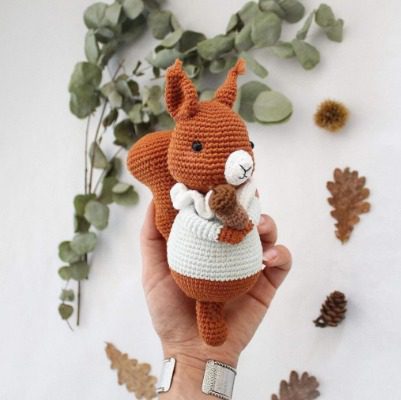
Check this out :Crochet a Dwight Inspired Amigurumi Doll
Conclusion
Creating this adorable squirrel amigurumi allows you to combine the therapeutic joy of crochet with the creation of a charming woodland character. The two-tone body design, expressive face, and distinctive fluffy tail work together to capture the essence of these beloved forest creatures.
Whether you’re making this squirrel for yourself, as a gift, or as a decorative piece, the process of creating each tiny stitch is as rewarding as seeing the finished project. With practice, you’ll develop your own unique amigurumi style, perhaps creating an entire woodland collection.
Remember that amigurumi is both a craft and an art form. Don’t be discouraged if your first squirrel doesn’t look exactly like the pattern photos—each creation has its own personality and charm. Happy crocheting, and may your woodland friend bring you joy for years to come!


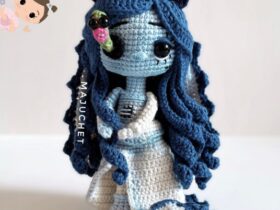
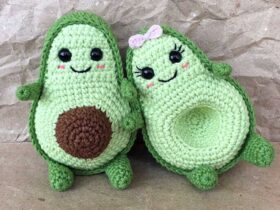
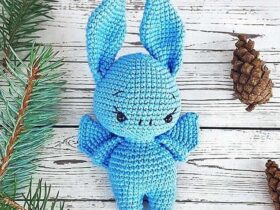
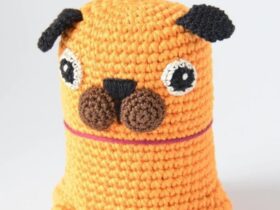
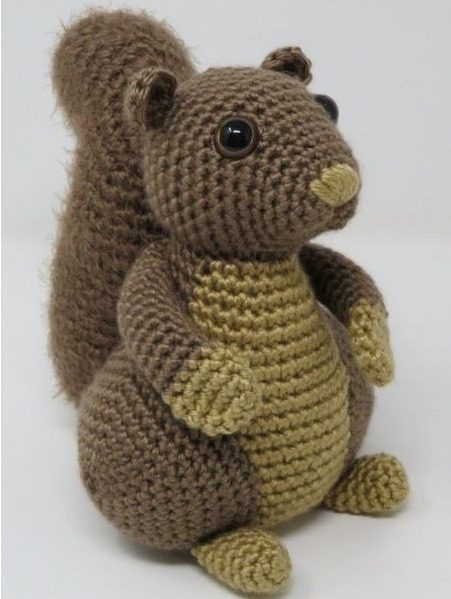
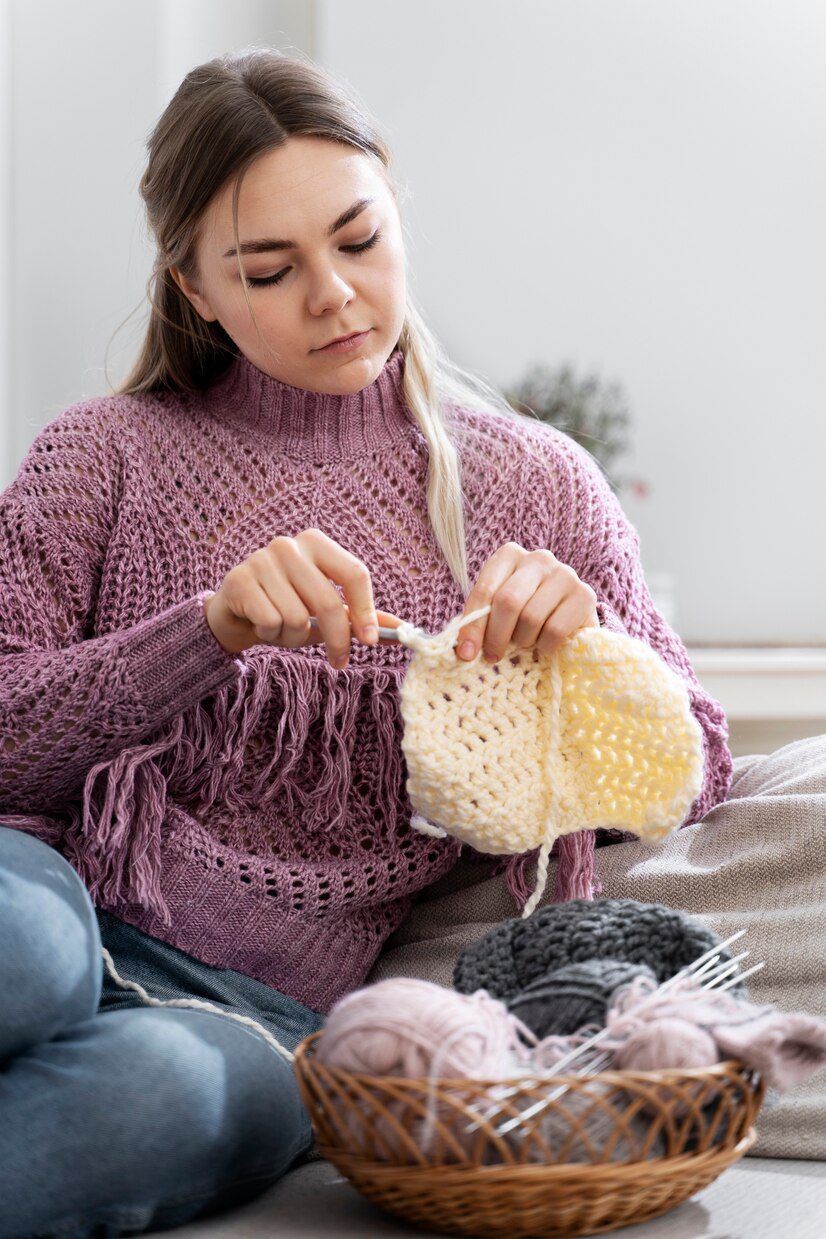

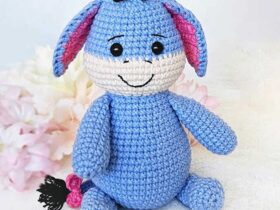
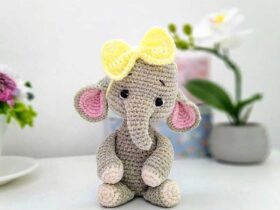
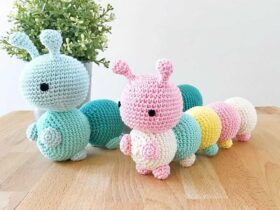
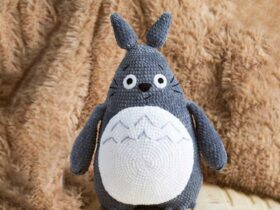
Leave a Reply